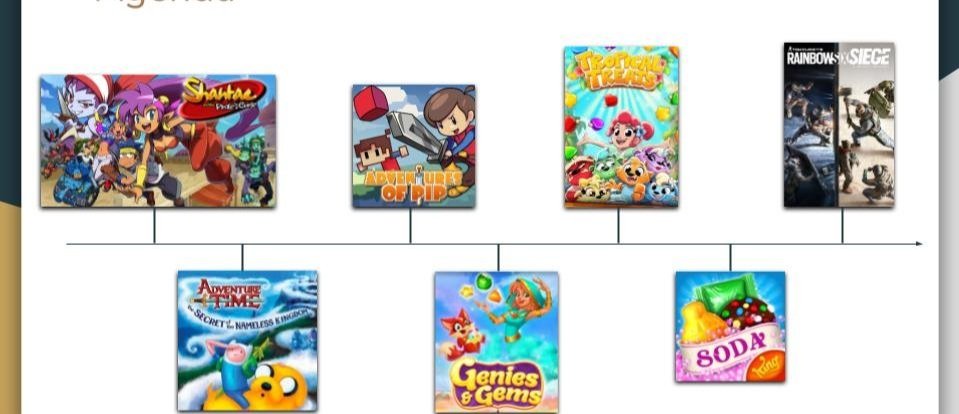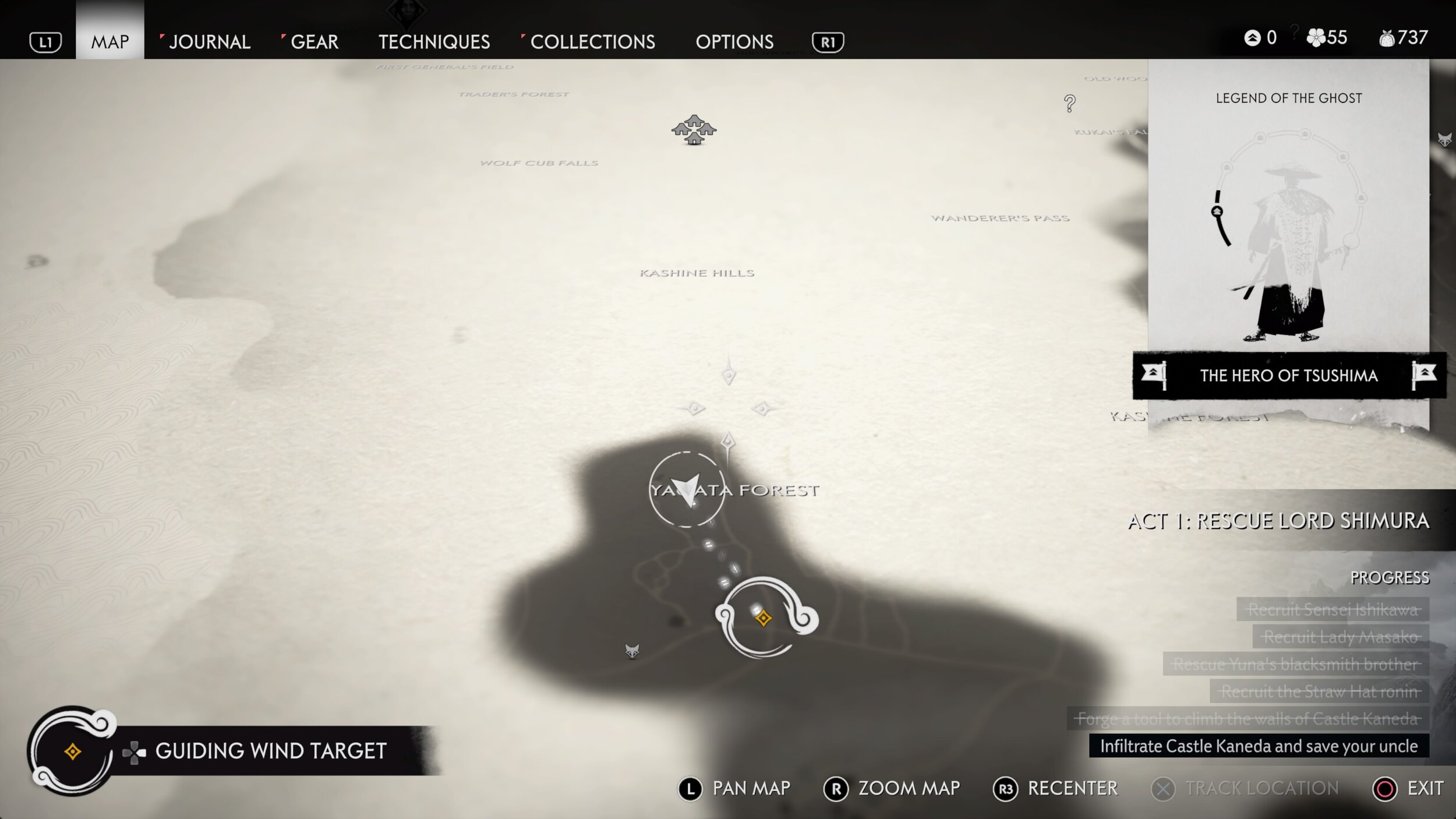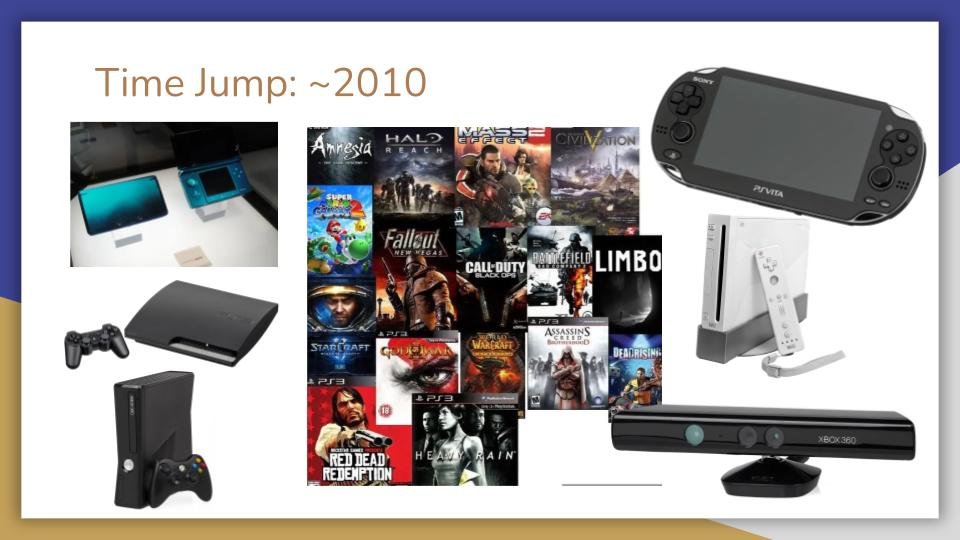What you’ll read below are some of my talking points used on a presentation I gave to a university in Barcelona. The focus on the presenetation was taking a look back in this last decade of the games I’ve made and the journey I’ve been on so far mentioning lessons learned from each project.
One last note, some of the points made here was focused for people who are going into a creative field and should keep in mind when joining the industry, but I think it’s still good for seasoned vets to have a reminder.
“To understand what this talk was about, here are some of my main takeaways:
1. Reference & keep an open mind
2. Understanding other crafts & development
3. Make sure you’re solving the right problems
4. Failing Correctly (Data + Design)
5. Design fundamentals”
2010 - Wayforward
I got my start during the PS3, Xbox 360, and 3DS era and my first professional design job to work at WayForward Technologies.
Seventh Generation
I was lucky to work with some people who have been making games since the original Gameboy days to when I joined the studio during the seventh console generation (Xbox 360, PS3, Nintendo Wii, PS Vita, & Gameboy DSi). This generation was a time of new 3D vision and motion control innovations.
Creating your toolbox
I approached translating an emotional experience by breaking it down room by room and analyzing the mechanics to find "easy wins" or low-hanging fruit.
As I was learning and trying different methods of creating rules for myself, I aimed to find a formula that could help me identify a "fun" pattern. For example, combining jumping, melee attacks, and a new mechanic like gliding. Understanding the tactical feel of the player when using the jump button to glide across a long gap and then interacting with a button to open a door was important.
However, I also needed to design a multi-room area, or dungeon, with these mechanics in mind. The fun part was using the abilities to move from platform to platform and defeat enemies.
In this project with Shantae, I focused on both micro and macro level design, which made it challenging to see the bigger picture. I had to think about the overall emotional feel and how the abilities would fit together. Designing the dungeon's theme helped shape my rooms and ultimately contributed to the final product.
“What I wish I had back then are also online resources — I recommend checking out the two design resources (see buttons)”
I want to mention that I didn't work alone. I learned from experienced game developers who have been creating games since the original Gameboy. They have developed numerous games before and after I started. After working on a few projects closely with programmers, producers, artists, and other professionals like business developers and accountants, I gained valuable insight into how things operate in the real world.
I gained two of some of the of the most important lessons during my time there:
Understanding how to reference properly and keep the creative vision
Development roles + studio roles and understanding how they contributed into the project
2014 - Kickstarter
Kickstarter
Double Fine threw their project to get funded by asking only $400,000… but then received $3,000,000.
In this case Double Fine was able to do something no one has done before, which is, to fully fund the entire game. Instead of having to go to a major publisher(s), angel investment, or even use their company capital.
This became a digital gold rush, where indies saw their chance to be able to fund a good portion of their game.
After some layoffs, I was contacted by a former coworker who mentioned that there was an opportunity to join an even smaller studio. Where they would be jumping into the idea of crowdfunding and taking advantage of what Kickstarter was offering.
Indie Adventures
I may or may not have said it, but, '“games are hard.”
When joining this team, we had to build everything from the ground up. And I mean everything. With a team of roughly 6 people. We jumped around a lot on breaking down games of what we considered to be masterclass + trying to define what the full game was supposed to be.
Indie life is unforgiving and caused some extremely late nights where a few of us (willingly) did long hours just so we could meet some ambitious goals. This will probably be a longer post in the future but for now here are some bullet point takeaway challenges:
Make sure you have your 3Cs under control, especially when it comes to making a game that’s focused on platforming
Most people want to innovate to stand out, don’t be afraid to walk where those have walked before. Innovate where it matters
Make sure there are clear reasons why you add any system in your game, does it fit with your direction?
Creating communities for a company is hard
Now there are some things that I understand being much much later in my career, but we did the best with what we could with the knowledge that we had during that time. It’s always going to be tricky In any creative medium having to fill out a blank page.
We should’ve realized that there is nothing wrong with building off what has been done before us and we realized that way too late into our production (~9 months). We may have focused on doing too much on innovation. Doing this caused a whole mess of issues.
2015 - Free to play (F2P)
Race to the bottom
There’s a lot to say when it comes to game monetization strategy and how we got to F2P. League of Legends was one of the bigger titles during this time that decided to come out as free to play, which gained a lot of success because this was a much more polished version of what the DOTA custom game ever was.
Around this time there was a trend of other games trying to follow suit, like how Team Fortress 2 decided to switch to F2P due to their loot boxes already having a monetization. Then there was the mobile side that started the whole race to the bottom of games being free to play and cracking the code on how to monetize their content.
![[Talk] Design in 10_ Reflecting Back (6).jpg](https://images.squarespace-cdn.com/content/v1/56eb8ec062cd94d1a14a252c/1728229700076-SGSD65WVDPNOZ559EWS1/%5BTalk%5D+Design+in+10_+Reflecting+Back+%286%29.jpg)
![[Talk] Design in 10_ Reflecting Back (7).jpg](https://images.squarespace-cdn.com/content/v1/56eb8ec062cd94d1a14a252c/1728229699971-ZQWT1UINQD14CUIQX19D/%5BTalk%5D+Design+in+10_+Reflecting+Back+%287%29.jpg)
F2P Design
While the main gameplay between each of these has minor differences, the systems outside the core gameplay change quite a bit.
However, even with very similar-looking games, they each required different approaches. Learning to be more data-informed helped me validate a lot of the design assumptions. And within your designs, you will make many! Not just with gameplay but also with writing, icons, etc.
And, again, my original goal was to understand F2P which would in turn give me experience in learning how to grow and maintain a live service game.
2023 - Multiplayer FPS
New Craft: Mangement
Rainbow itself is a very large team, with 500+ people working across the world. Currently, I help manage and support Game Designers & UX Designers on Siege across three different teams: Balancing, Playlists, & Onboarding. We have to produce major content every season (which is, three months) and this amount of coordination and creativity can be difficult.
Everything I’ve been mentioning up to this point I use to help have discussions with the designers I manage, directors I chat with, and even to production.
And contrary to belief, management is its craft within itself. People are complicated, and knowing how to navigate the macro and micro communications of politics is… challenging.
With all of this knowing the fundamentals of design has been my current takeaway as of late. There’s no secret answer to the things I’ve been doing for these last 10 years. Nor will I say that what I’ve been doing has been simple. These years of experience have given me references that I use in my daily work that I continue to build upon. However, I will say that it is a good thing to remember to double-check your fundamentals. At least for me, it gave some reflection on why those fundamentals are essential.
Some that I’ve been recalling more these days and what has stayed true over time:
Making sure you understand your designer process and gut.
Working on a multiplayer FPS tends to bring a specific kind of audience. Not to mention that Ubisoft has a specific reputation where players have a specific bias
What are your goals?
Who are you designing for?
To wrap it up here are the five takeaways from the previous projects:












![[Talk] Design in 10_ Reflecting Back (2).jpg](https://images.squarespace-cdn.com/content/v1/56eb8ec062cd94d1a14a252c/1726088485138-HDYLGPB6640CUXV1BPA9/%5BTalk%5D+Design+in+10_+Reflecting+Back+%282%29.jpg)
![[Talk] Design in 10_ Reflecting Back (3).jpg](https://images.squarespace-cdn.com/content/v1/56eb8ec062cd94d1a14a252c/1726088485171-8DOPFMGR2YJPXMPCBG59/%5BTalk%5D+Design+in+10_+Reflecting+Back+%283%29.jpg)
![[Talk] Design in 10_ Reflecting Back.jpg](https://images.squarespace-cdn.com/content/v1/56eb8ec062cd94d1a14a252c/1728227163098-ZPRDRHVCYYKZHL5JII8D/%5BTalk%5D+Design+in+10_+Reflecting+Back.jpg)



